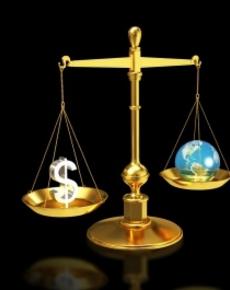
Making Strategic Decisions

Dr. Rosenzweig says in his article this is not because executives don’t want to make good decisions, but rather the research has focused predominantly on one type of decision – and this type is not the one most challenging for leaders to make.
He says decisions vary along two dimensions – control and performance – and within each dimension, they range from high to low. This results in four types of decisions. He says: “To get better at making decisions, it’s important to recognize the different types.”
He says that the “control” dimension considers how much a leader can influence the terms of the decision and the outcome – is it choosing among options or is it crafting an option? Is it a one-time decision where there is no influence after it is made, or one that evolves over time and requires continuous input? He says the “performance” dimension deals with how a leader measures success and that success can be defined as either absolute -- or relative to how others are doing.
Decision Type 1: Routine Judgments and Choices. (Control is low; Performance is absolute in comparison to others). Dr. Rosenzweig says that this type of decision is similar to shopping in a grocery store, voting for a political candidate, or buying stock: control is low. You pick from among items available; you have no option to improve them; you make the best choice available. Performance is absolute, and not dependent on others. Rosenzweig observes that “we now understand that the way options are framed and presented can shape our purchasing decisions.” As a result, staff can have a greater sway over decisions in this dimension.
Decision Type 2: Influencing Outcomes. (Control is high; Performance is absolute in comparison to others). Where we have an opportunity to influence or control outcomes, we tend to “use our energy and talents to make things happen,” says Dr. Rosenzweig. We can, for example, determine how long we will work on a project. In this decision type, positive thinking and optimism are useful attributes for a leader, he says.
Decision Type 3: Placing Competitive Bets. (Control is low; Performance is relative to others). In this dimension, notes Rosenzweig, “Success is no long a matter of absolute performance but depends on how well you do relative to others.” (This reminds me of the story of being chased by a bear. You don’t have to outrun the bear yourself; you just have to outrun someone else who is also running from the bear).
This decision type means that good decisions depend on anticipating the moves of others, which is the essence of strategic thinking. In terms of models, “game theory” is most useful for understanding competitive dynamics. In this world, you can’t alter the rules of the game, the possible options are pre-defined, and benefits and costs cannot be redefined. In many cases, this often defines the world of many agency leaders in the executive branch!
Decision Type 4: Managing for Strategic Success. (Control is high; Performance is relative to others). Rosenzweig says this dimension is where leaders “can actively influence outcomes, and success means doing better than rivals.” He says this is the crux of strategic management, for example the decision to enter a new market, or to acquire another firm. He says the positive thinking approach is important for leaders operating in this dimension. In fact, he says “only those who are willing to go beyond what seems reasonable will succeed.”
Dr. Rosenzweig says that most of the academic research into executive decision-making tends to focus on Decision Type 1 because it is easily subjected to carefully controlled experiments, even though the area where leaders could benefit the most from additional research is in Decision Type 4. The most consequential decisions typically fall into this dimension, but because of their complexity, they don’t lend themselves to controlled experiments since they are often context-dependent.
A trio of other authors in the same issue of the Harvard Business Review have a similar article – “Deciding How to Decide,” and they offer a five-part framework, including a decision-tree for making high-risk strategic decisions. While the full article is not available without subscription, there is a succinct six-minute video worth watching – and it uses McDonald’s as the case study!
Graphic Credit: Courtesy of Dream Designs via FreeDigitalPhotos



